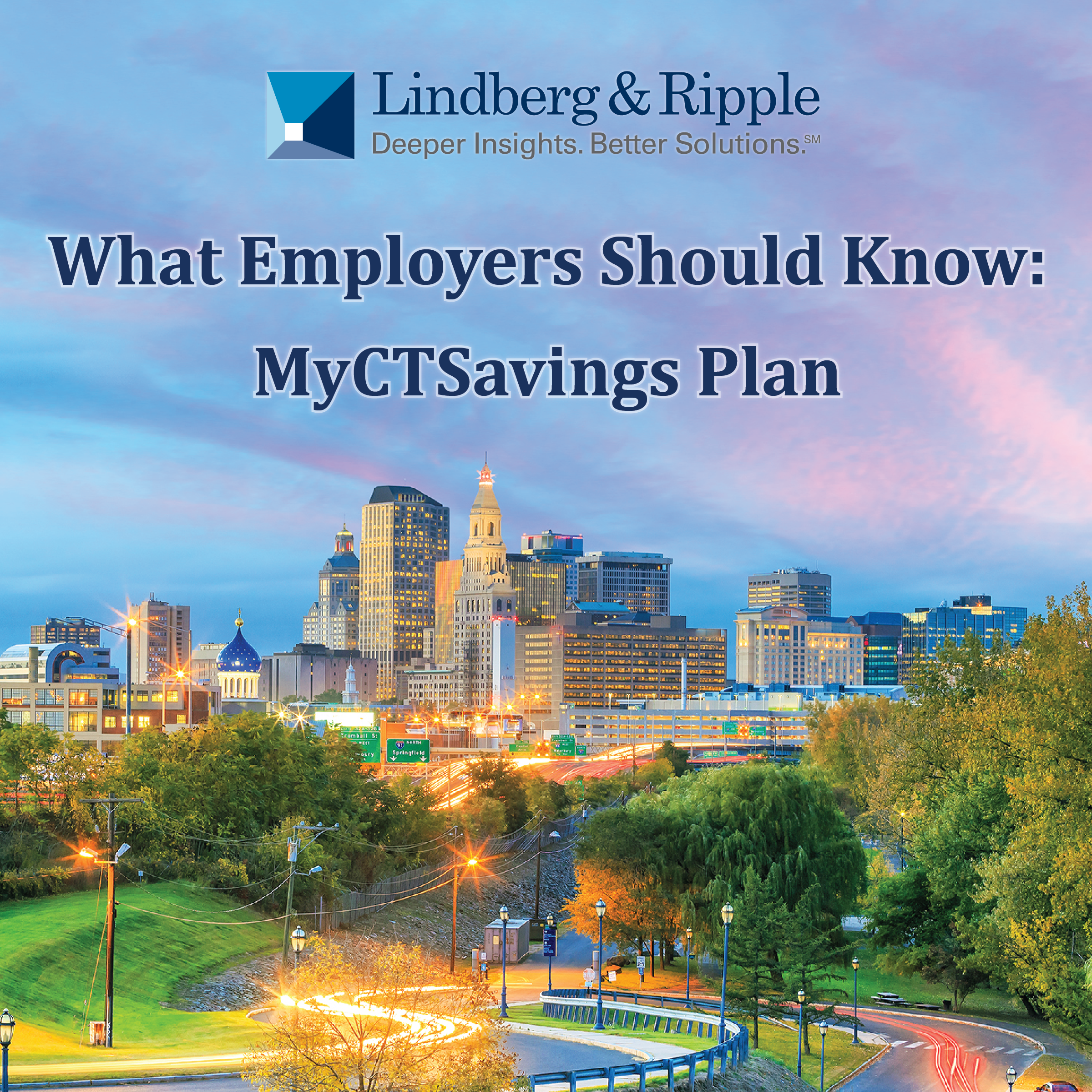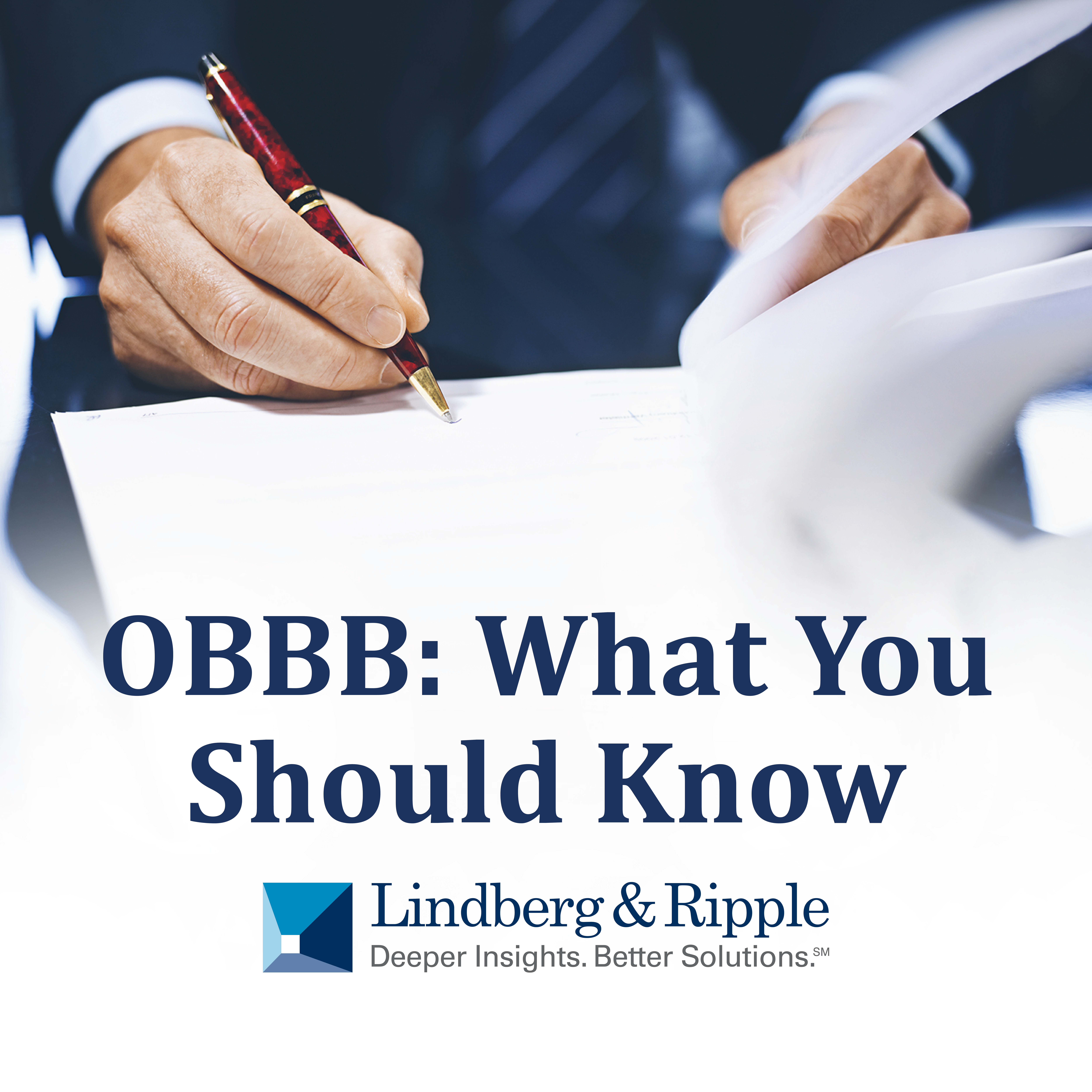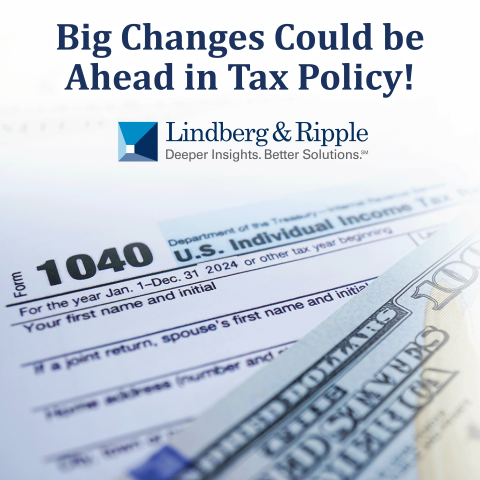Did you know that Connecticut businesses could face fines of up to $1,500 per employee for not complying with the state’s retirement mandate? In fact, if you have five or more employees and do not offer a retirement plan, you are required to register for MyCTSavings or certify your exemption.
MyCTSavings is designed to make it easier for employees to save for retirement—especially those who do not currently have access to a workplace retirement plan. At Lindberg & Ripple, we work with business owners and leadership teams across the state who are navigating this new requirement. Whether you already offer a plan or are still evaluating your options, here is a quick overview of what the law requires, how the program works, and how we can help.
Why This Mandate Exists
Today, nearly 600,000 workers in Connecticut do not have access to a retirement plan through their employer. That number is part of a much larger national trend—roughly half of all workers in the private sector face the same challenge.
In response, states like Connecticut have begun to roll out retirement programs that aim to close the gap and encourage long-term saving.
Who Needs to Comply—and When
MyCTSavings applies to businesses that meet all three of the following:
- You employ five or more people in Connecticut
- You have been in business for at least two years
- You do not currently offer a qualified retirement plan like a 401(k) or SEP IRA
If your business qualifies, you are required to register for MyCTSavings or certify that you already offer a plan.
How MyCTSavings Works
The program is built around simplicity—for both employers and employees. Here is how it functions:
- Employees are automatically enrolled in a Roth IRA after 30 days on the job.
- The default contribution is 3% of gross pay, though employees can change that rate or opt out at any time.
- Employers are only responsible for setting up payroll deductions and uploading employee information.
- The accounts are owned by the employee and move with them if they change jobs.
- There is no employer match required, and businesses hold no fiduciary responsibility for the plan.
Exemptions: What Qualifies as a Retirement Plan
If your business already offers a qualified plan, you may be exempt. Here are the types of plans that meet the state’s criteria:
- 401(k), 403(b), 457(b), or similar
- SEP IRA or SIMPLE IRA
- Governmental or defined benefit plans
You will still need to certify your exemption using the state’s portal and a unique access code.
What Happens If You Do Not Register
Connecticut has made it clear: businesses that ignore the requirement may face financial penalties. Fines can range from $500 to $1,500 per employee, depending on the size of your company and how long you have been out of compliance.
The Opportunity Behind the Requirement
While the mandate may feel like another item on your compliance list, it also presents a moment to evaluate whether your current benefits plan is working as hard as it could be. Offering a more robust, privately managed retirement solution may not only satisfy the requirement—but also help attract and retain top talent.
At Lindberg & Ripple, we help clients weigh the options, structure their retirement plans, and stay ahead of changing regulations. Whether you need to certify your exemption, consider implementing a new plan, or simply want a second opinion, we are here to help.
Let Us Help You Navigate This
We understand that no two businesses are alike. Our team can help you:
- Confirm whether the mandate applies to you
- Evaluate your current retirement offerings
- Compare the state plan to private alternatives
- Streamline your compliance process
If you would like to have a conversation about MyCTSavings—or explore better ways to serve your employees—we welcome the opportunity to talk.
File#4670284









